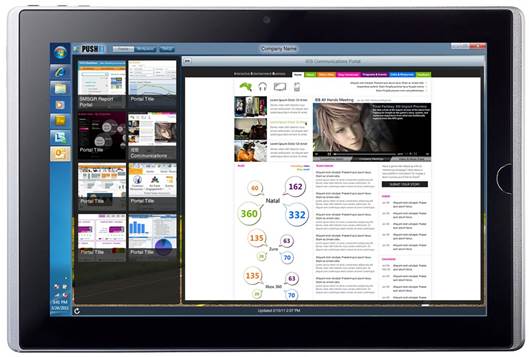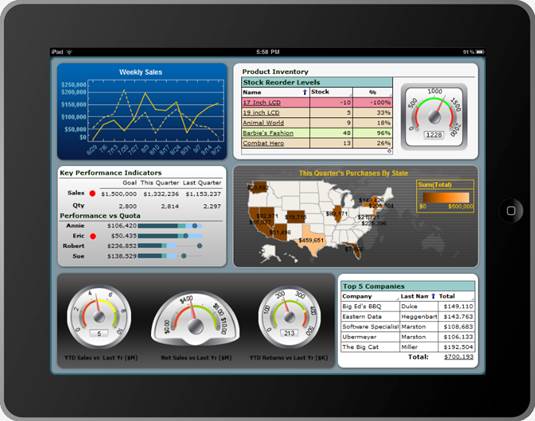Suites vs. specialized solutions
Many vendors offer mobile versions of their
desktop-based business intelligence solutions, some of which are simply mobile
views while others are native applications, so that would be a good place to
start. But depending on what types of information you are trying to collect,
you might wonder whether or not you can get the functionality you need from a
packaged BI suite or if you’ll need to invest in individualized solutions.

There
are all-in-one solutions that cover both traditional desktop and mobile BI
The truth is that there isn’t one solid
answer, because it ultimately depends on your specific use case, but luckily
there are multiple options available. “There are all-in-one solutions that
cover both traditional desktop and mobile BI,” says Myers. “However, there are
solutions that can meet special requirements for connectivity – for example,
special hardware with radio connectivity that meet particular needs.”
Tapadinhas says that most mobile BI
solutions available on the market are for a generic purpose, which means they
can be implemented in a variety of use cases. But he does add that some tools
are better designed to support certain types of information gathering than
others. “For the two main use cases, pretty much every tool will deliver
management dash-board and worker reporting,” says Tapadinhas. “It’s not limited
by the tools, but instead by the strategy that the company has and the
objectives that it’s trying to achieve. If you need mobile analytics or other
use cases, then you would need to look deeper into the tool’s capabilities to
make sure it fits your needs.”
Customize the user experience
If for any reason a mobile business
intelligence solution just doesn’t quite fit, keep in mind that most of these
tools offer some form of customization that may move them closer to your
requirements. And most vendors also offer different versions of their solutions
dependent on operating system, so those solutions are specifically designed to
work both with devices deployed by your organization and devices introduced as
part of a BYOD (bring your own device) policy. Additionally, many mobile BI
solutions offer customization options so users can quickly access data and know
exactly what they’re looking at. It all comes down to what your employees are
comfortable with.

Many
mobile BI solutions offer customization options so users can quickly access
data and know exactly what they’re looking at
“Customized presentation layers are one of
the aspects brought forward from traditional desktop BI platforms,” says Myers.
“Also, ‘telling a story’ with a particular dashboard or presentation layer has
always been a hallmark of data visualization tools. I always recommend
organizations to make their data visualizations resonate with their data
visualizations resonate with their user base rather than take the stock
configurations.”
A fit for almost any company
The ultimate goal of mobile business
intelligence is to not only provide mobile workers with easy access to
information; it is also about providing an experience that will convince your
workforce to take advantage of the BI solutions your organization has invested
in.

Mobile
BI is more about ease of use, easy access, and information pervasiveness than
mobility
“Mobile BI is more about ease of use, easy
access, and information pervasiveness than mobility,” says Tapadinhas. “You
don’t need to be a company with people working on the road or with large
warehouses where people move around to use mobile BI. It’s a great way of
increasing the return on investment of existing BI platforms because with these
tools and due to their ease of use, they’ll be able to attract new users and
that’s always good for a BI environment.”